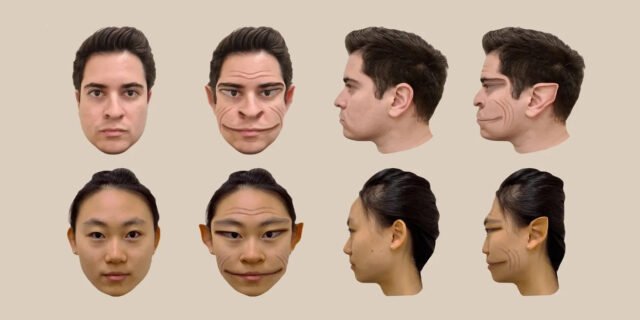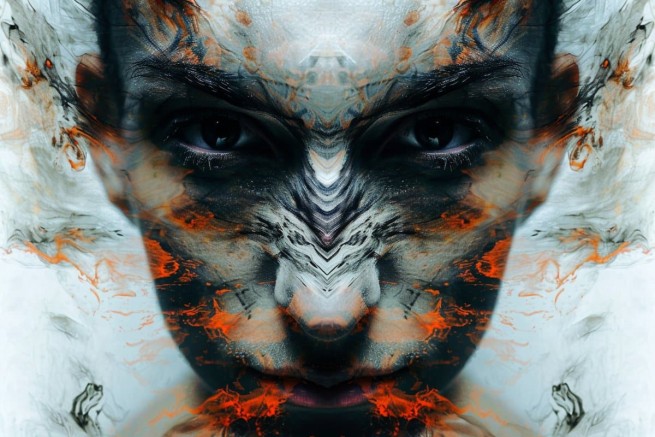The human brain is able to quickly recognize faces and interpret images, separating familiar and safe images from those that should cause wariness and fear. However, this setup in the head sometimes fails.
Scientists from the Department of Psychology and Brain Sciences at Dartmouth College have confirmed the presence of a disease called prosopometamorphopsia (Prosopometamorphopsia – from the Greek “πρόσωπο” – face and “μεταμόρφωση” – change/changed).
A patient approached them with complaints that lately he had been seeing people’s faces changed and even frightening. He was diagnosed with a rare neurological disease – prosopometamorphopsia (PMO). Studying the characteristics of the 58-year-old patient’s illness allowed scientists to better understand the nature of this disorder, and at the same time understand how the brain separates “friends from enemies.” How does a person see faces with the disease prosopometamorphopsia:

When information about this appeared on the Internet, fans of “conspiracy theories” began to shout that people who “see others” (devils in human form or aliens) finally began to appear. This was fueled by Carpenter's famous film “Strangers Among Us” (https://www.youtube.com/watch?v=ZMbkyYmOir0). In a science-fiction film, a man found glasses, putting on which he could see real reality and “reincarnations.”
One way or another, prosopometamorphopsia (sometimes known as “demon face syndrome”) is a visual disorder characterized by altered perception of faces. A person with this disorder experiences facial features that are distorted in a variety of ways, including sagging, swelling, and changes in color and position. Prosopometamorphopsia is different from prosopagnosia (which Brad Pitt suffers from). If this disease is present, a person demonstrates inability to recognize faces. About 75 cases of prosopometamorphopsia have been described in the scientific literature. In about half of the reported cases, facial features on both sides appear distorted. In the other half of cases, distortions are limited to one side of the face (left or right), and this condition is called hemiprosopometamorphopsia.
As a rule, the faces of a person suffering from this disease appear distorted. He is able to recognize faces normally, but perceives them as strangely disfigured. These facial hallucinations are usually described as ugly, with prominent eyes and teeth. Some describe the faces as cartoonish. It is known that faces with displaced features are also perceived. For example, one patient described a person's face as having a nose turned to the side, a mouth set diagonally, and one eyebrow higher than the other. Prosopometamorphopsia may involve perception of the entire face or only one side of it (usually after damage to the right hemisphere).
The exact cause of prosopometamorphopsia is still unknown. However, several potential theories have been proposed in the literature. Typically, this condition is associated with damage or abnormalities in various areas of the brain (temporal, occipital, parietal and frontal lobes). In some cases, the development of prosopometamorphopsia has been noted, as manifestation of epilepsy.







More Stories
Jennifer Aniston shared why she feels stressed when meeting her Greek relatives
€10,000 for families moving to these three areas
Habit "jump out" from a vehicle may result in a fine